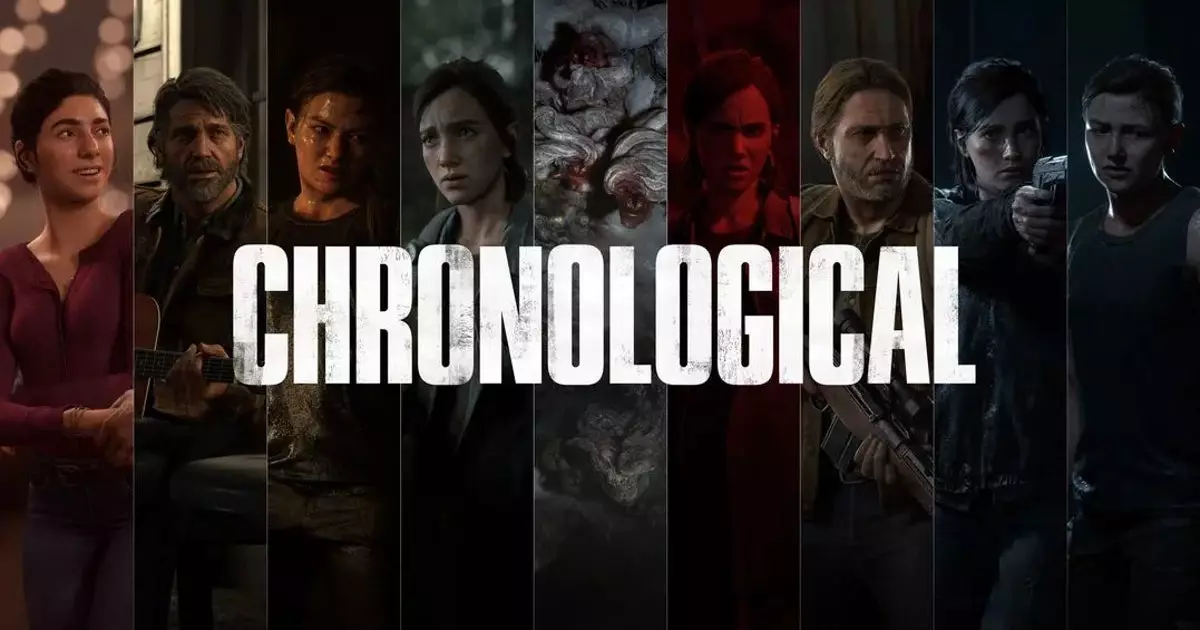The recent release of a new chronological gameplay mode for The Last of Us Part II represents a provocative shift in how we interact with complex storytelling in video games. Naughty Dog, known for their masterful, nonlinear narratives, now offers players the option to experience the game’s emotionally dense story in strict chronological order. While some may view this as an innovative way to deepen understanding, it ultimately raises questions about the core of storytelling and whether such a transformation enriches or dilutes the narrative’s power.
This move suggests that the developers believe that the story’s depth is best appreciated through its original non-linear design—an intricate tapestry of flashbacks, memories, and present-day conflicts. By offering a linear alternative, Naughty Dog seems to challenge the very essence of narrative craftsmanship, potentially reducing a richly layered story into a straightforward sequence, stripping away the artistic intent that elevates it beyond mere gameplay.
The Case Against Chronology in Storytelling
The essence of The Last of Us Part II’s storytelling lies in its deliberate chaos—Ellie’s and Abby’s paths intertwine across time and space, revealing motivations layered with trauma, hope, and revenge. Rearranging these moments chronologically could risk flattening the emotional spectrum that makes the game compelling. The nonlinear structure allows players to decode characters’ motivations gradually, simulating the fragmented nature of memory and trauma. Disregarding this complexity might lessen the emotional impact, transforming a profound narrative into a simplistic recounting of events.
Moreover, such an alteration suggests a misunderstanding of how stories are constructed in art. The chaos and disjointed timeline serve as a reflection of the fractured psychological states of characters. A linear presentation, while easier to follow, may deprive players of the opportunity to experience the story’s emotional weight as intended—an experience that resonates more deeply when one unravels it piece by piece, with all its ambiguities and surprises intact.
The Merits and Risks of Narrative Experimentation
Despite the criticisms, this new mode invites players to reconsider the game through a different lens. For some, it might act as a clarifying tool—an educational experience to better understand character arcs and thematic threads that might otherwise be obscured. It could provide a more straightforward way to interpret the story’s events and character motivations, especially for players who find the original non-linear storytelling convoluted or inaccessible.
However, daring to reframe such a meticulously crafted narrative risks diluting its artistic potency. By prioritizing uniformity and order, does Naughty Dog strip away some of the narrative’s poetic ambiguity? In emphasizing a chronological perspective, the game’s thematic subtleties—such as the cyclical nature of violence, revenge, and trauma—may be lost or diminished. It raises the question: are we losing the fragmented, visceral storytelling that immersed players in its emotional chaos, in favor of a more sanitized, predictable version?
A Hypocritical Oud to Innovation
Skeptics might see this move as an act of contrived innovation—another marketing gimmick disguised as a creative breakthrough. The tone of the announcement, with its dismissive attitude towards those who prefer the original storytelling, hints at a clumsy attempt to serve multiple agendas. Inflicting a “one-size-fits-all” mode on a game that was purposefully designed to evoke emotional disarray feels more like a misjudged experiment than a genuine leap forward.
The contrast is striking: on one side, a narrative lauded for its depth and complexity; on the other, a vanilla, timeline-ordered version that risks reducing art to a mere sequence of events. If storytelling is supposed to mirror human experience, then the nonlinear approach is more authentic—our memories, after all, do not unfold in straight lines.
Final Thoughts: A Distraction or a Learning Curve?
Ultimately, this new mode tests the boundaries of interactive storytelling. While some may see it as a misguided detour, it shines a light on a fundamental issue: how much control should developers have over the story’s presentation? For many fans, the original structure is an essential component of the game’s identity, a carefully curated emotional journey. Tampering with it could be viewed as an overreach—a departure from the artistry that made The Last of Us Part II a groundbreaking narrative experience.
Whether this experiment will stand the test of time remains to be seen. But what is clear is that storytelling in games is a delicate dance—one that requires respect for its complexity, not simplification. Naughty Dog’s attempt is worth scrutinizing, not just for what it offers, but for what it reveals about the evolving relationship between narrative design and player agency.

